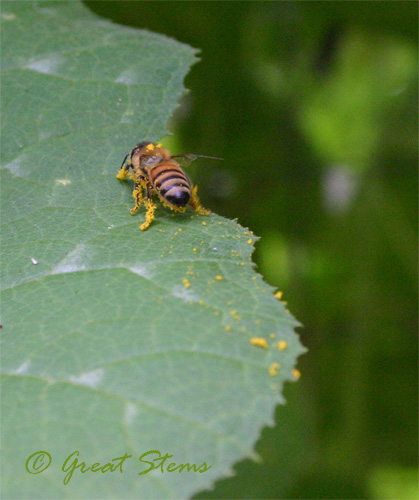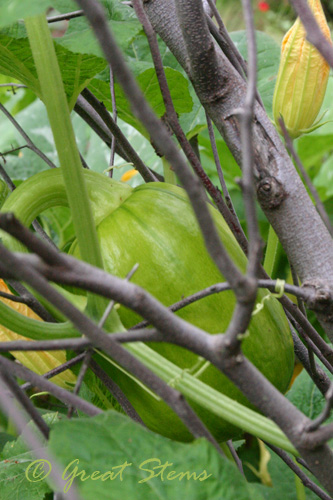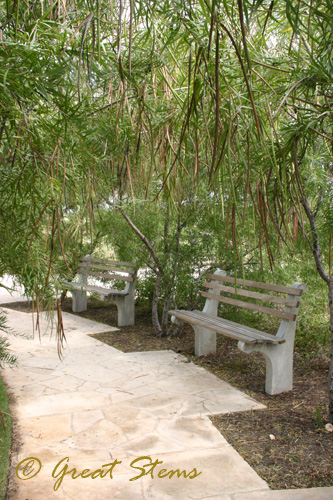I’ll try post about this again at the appropriate time, but I wanted to announce that the third week of October is now being recognized as Texas Native Plant Week. Here is the information passed on to me from Keep Austin Wild; more details can be found on the City of Austin site at the link below. There will even be designated Plants of the Day throughout the week, with certified habitats hosting activities.
Texas Native Plant Week October 19th-23rd
In June 2009 Governor PerrOn June 16, 2009 Governor Perry signed a bill into law that will recognize the third week in October as Texas Native Plant Week. The bill is intended to emphasize the role of native plants in conservation efforts and to be used as incentive for the Texas education system to teach school children about the importance of native plants. The Native Plant Society of Texas teamed with State Representative Donna Howard to present the bill to the State Congress. The bill passed unanimously in both houses.
To mark this inaugural Texas Native Plant Week the City of Austin, in partnership with State Representative Donna Howard’s Office, the Lady Bird Johnson Wildflower Center, and the Native Plant Society of Texas, will host activities and educational opportunities for the public to learn more about our amazing Texas native plants.
Thursday, October 15th, 5:30pm
Event: City Council Proclamation to announce Texas Native Plant Awareness Week. Mayor Lee Leffingwell will present Native Plant Society of Texas with proclamation.
Location: Austin City Hall Council Chambers, 301 W. Second Street Austin, TX 78701
Monday, October 19, 10:00am:
Event: Austin Parks and Recreation Department (PARD) demonstration habitat garden certification ceremony and media kick off for Texas Native Plant Week. Habitat Garden Tour to follow press conference.
The Parks and Recreation Department’s main office demonstration habitat garden will be recognized by the National Wildlife Federation and Texas Parks and Wildlife Department as a Best of Texas Habitat site. This is the highest level of wildlife habitat certification in Texas and is bestowed upon landscapes that use a majority of native plants, provide wildlife food and water sources year round, and practice at least six resource conservation measures. PARD’s main office habitat is the first City of Austin habitat site to receive this more stringent level of certification.
This demonstration habitat garden serves as a place people can come to learn about what wildlife habitat is and how to create a place for butterflies, songbirds, and hummingbirds at their own homes using beautiful native plants. Austin Mayor Lee Leffingwell, State Representative Donna Howard, Parks and Recreation Department Director Sara Hensley, Lady Bird Johnson Wildflower Center Executive Director Susan Rieff and others will participate in the habitat certification ceremony and native plant week kick off celebration.
Location: City of Austin Parks and Recreation Department Main Office, 200 S. Lamar Blvd, 78704.
For more information visit http://www.ci.austin.tx.us/parks/nativeplantweek.htm or call the Parks and Recreation Department’s Wildlife Austin Program at 512-327-8181×29.
Please help us spread the word about Texas’ first Native Plant Week!
If you live in Austin, consider attending one or both events, and if you live in Texas, support our beautiful state by planting native plants!
 These are the eggs of green lacewings. As larvae, they are voracious aphid eaters. Yay, another ally in the garden! I need them because the aphids are worse than ever. I seem to have least three species now — I’ll call them green, yellow, and beige. The green I’m sure are corn leaf aphids. I have got to get out and tackle them TODAY. My veggies, my milkweed, and now my firebush plant are all having an aphid problem. The little pests took advantage of my time away from the garden during the rainy week and bred like rabbits. I’m starting to think that it’s the other way around, and rabbits breed like aphids. Today I’m seeing wings on some. Gah, more colonization!
These are the eggs of green lacewings. As larvae, they are voracious aphid eaters. Yay, another ally in the garden! I need them because the aphids are worse than ever. I seem to have least three species now — I’ll call them green, yellow, and beige. The green I’m sure are corn leaf aphids. I have got to get out and tackle them TODAY. My veggies, my milkweed, and now my firebush plant are all having an aphid problem. The little pests took advantage of my time away from the garden during the rainy week and bred like rabbits. I’m starting to think that it’s the other way around, and rabbits breed like aphids. Today I’m seeing wings on some. Gah, more colonization!
 So I’ve got new lacewings arriving soon, and of course I’ve got ladybugs. More spiders are arriving, as are earthworms. The bees are getting plentiful, and I don’t even have to do the veggie porn thing to pollinate my plants anymore. I truly love the way nature just naturally (ha) balances its ecosystems. Got organic wastes? Happy earthworms move in. Got flowers? Let’s pollinate. Overpopulation of something? Here come the predators. And here come the predators to eat the other predators. Oh look, birdie treats. And then snakes. And hawks. Whee, life is grand.
So I’ve got new lacewings arriving soon, and of course I’ve got ladybugs. More spiders are arriving, as are earthworms. The bees are getting plentiful, and I don’t even have to do the veggie porn thing to pollinate my plants anymore. I truly love the way nature just naturally (ha) balances its ecosystems. Got organic wastes? Happy earthworms move in. Got flowers? Let’s pollinate. Overpopulation of something? Here come the predators. And here come the predators to eat the other predators. Oh look, birdie treats. And then snakes. And hawks. Whee, life is grand.



 With the rain this week, the yard is a big mudfest for the dogs, and they took advantage of it — digging where they shouldn’t, trampling through the butterfly garden, and taking turns leaping over the pumpkin vines. I’m out there yelling, “This is not your playground!” And then I realized my neighbor must think I’m nuts, because of course it IS their playground. If I can manage it, I’ll try to get a picture of the husky leaping in full gallop over the massive pumpkin plants (in between my yelling at him, of course). It really is a sight to behold.
With the rain this week, the yard is a big mudfest for the dogs, and they took advantage of it — digging where they shouldn’t, trampling through the butterfly garden, and taking turns leaping over the pumpkin vines. I’m out there yelling, “This is not your playground!” And then I realized my neighbor must think I’m nuts, because of course it IS their playground. If I can manage it, I’ll try to get a picture of the husky leaping in full gallop over the massive pumpkin plants (in between my yelling at him, of course). It really is a sight to behold. 

 Lindheimer Senna…
Lindheimer Senna…




 A view of the three ponds, surrounded by native grasses…
A view of the three ponds, surrounded by native grasses…

 Hornsby Bend is an area along a “bend” of the Colorado River, southeast of Austin, Texas, near the airport. Once home to dense forests and thickets, a man named Reuben Hornsby settled there in 1832, clearing the land for agricultural uses. Today it is home to the
Hornsby Bend is an area along a “bend” of the Colorado River, southeast of Austin, Texas, near the airport. Once home to dense forests and thickets, a man named Reuben Hornsby settled there in 1832, clearing the land for agricultural uses. Today it is home to the  But Hornsby Bend is so much more — 1,200 acres of marshes, woodlands, pastures, and riparian (river) areas. Because of the incredible biodiversity along the food chain and its multiple habitats, it has become known nationally as one of the best birdwatching sites in Texas, especially during times of migration. More than 360 species of birds have been sighted at Hornsby Bend. Migratory shorebirds, wading birds, and landbirds, some from the Arctic or from the southern tip of South America, stop at the ponds of Hornsby Bend as they travel to and from their winter habitats.
But Hornsby Bend is so much more — 1,200 acres of marshes, woodlands, pastures, and riparian (river) areas. Because of the incredible biodiversity along the food chain and its multiple habitats, it has become known nationally as one of the best birdwatching sites in Texas, especially during times of migration. More than 360 species of birds have been sighted at Hornsby Bend. Migratory shorebirds, wading birds, and landbirds, some from the Arctic or from the southern tip of South America, stop at the ponds of Hornsby Bend as they travel to and from their winter habitats.

 Near the wet grounds by the compost, many least sandpipers and other species scooted about for insects.
Near the wet grounds by the compost, many least sandpipers and other species scooted about for insects. And humans studied them from afar.
And humans studied them from afar. The wooded areas along the river provided opportunities to see tree-perching birds. A quiet walk along the paths allowed us to listen to the beautiful songs of many a bird, including the white-eyed vireo.
The wooded areas along the river provided opportunities to see tree-perching birds. A quiet walk along the paths allowed us to listen to the beautiful songs of many a bird, including the white-eyed vireo.  Another treatment area, these long greenhouses will also provide winter shelter to area birds. A red-shouldered hawk reportedly has hunted in there, in fact.
Another treatment area, these long greenhouses will also provide winter shelter to area birds. A red-shouldered hawk reportedly has hunted in there, in fact.
 And there are purple martins, too, though they are absent in September.
And there are purple martins, too, though they are absent in September.
 Back at the main building, the Habitat Steward Trainees listened to three speakers. The knowledge I gained this day was tremendous, from the history of the soil in the Austin area to the how’s and whys of organic matter, and from butterflies of Central Texas to urban wildlife, such as coyotes and raccoons. A great day, and a great place to visit.
Back at the main building, the Habitat Steward Trainees listened to three speakers. The knowledge I gained this day was tremendous, from the history of the soil in the Austin area to the how’s and whys of organic matter, and from butterflies of Central Texas to urban wildlife, such as coyotes and raccoons. A great day, and a great place to visit.

 The Pigeonberry plants are blooming like crazy. They berry, too, but the birds pick them off so fast.
The Pigeonberry plants are blooming like crazy. They berry, too, but the birds pick them off so fast.







